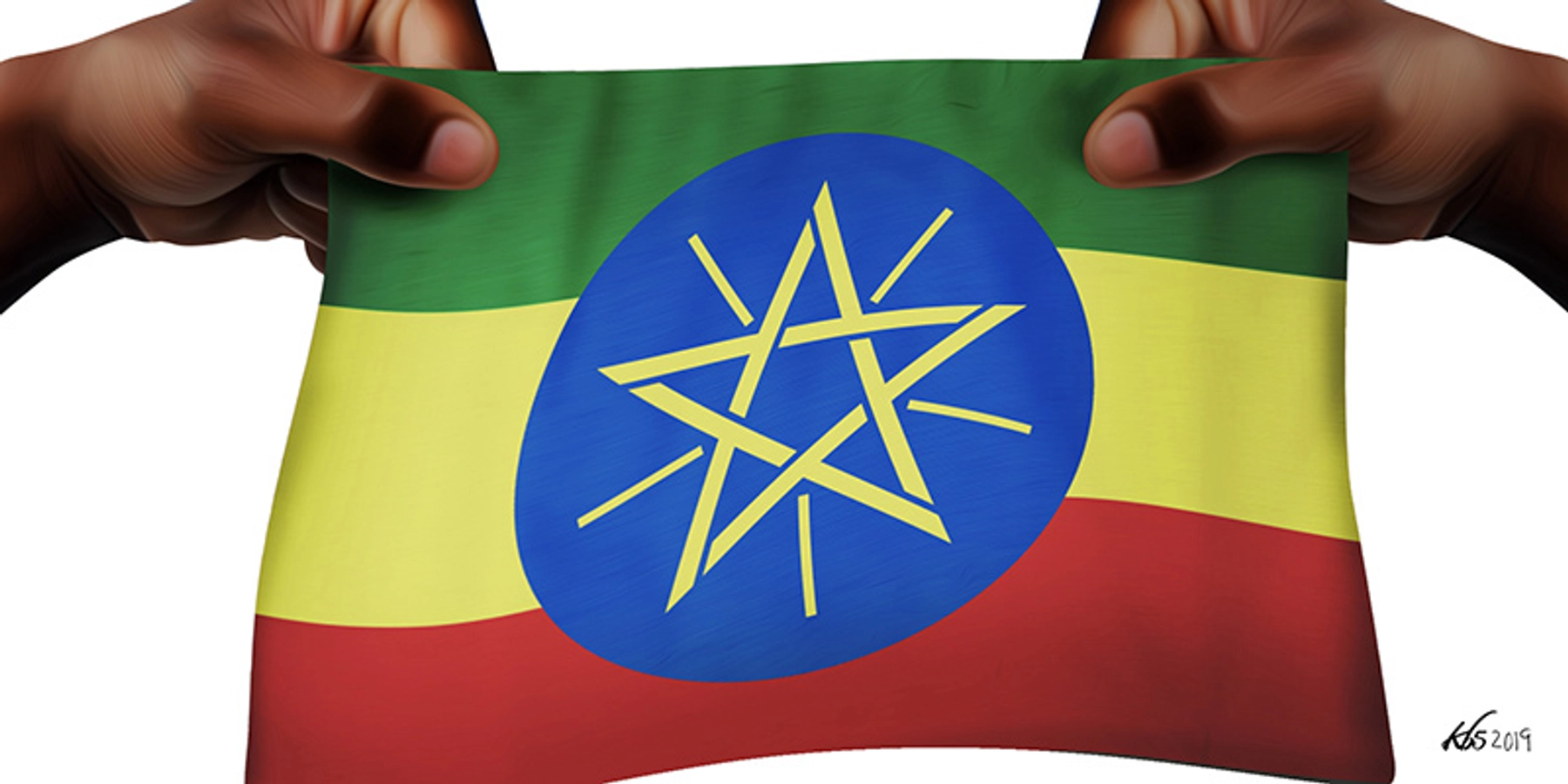Can Reconfiguring Amhara Region Bring Stability to Ethiopia?

Illustration of the current flag of Ethiopia being torn apart by forces that represent the politics of empire that is leading the country to disintegration. Source: The Elephant.
The multinational federal state structure that the 1995 constitution created was based on the linguistic distribution and settlement patterns in the country. In the case of the Amhara state, the regional state structure was formulated based on the spoken language without considering the actual settlement pattern of the nations and nationalities of the region. There was no constitutional basis for the creation an Amhara regional state. At the time, the “Amhara” elite maintained that the Amhara identity had evolved to a shared Ethiopian identity and opposed the creation of an “ethnic” regional state. The Amhara regional state was created for a nation or nationality that did not self-acknowledge its existence and did not demand self-rule. The architects of the multinational federation imposed on the non-Amhara Agaw, Qemant, Oromo, Argoba, Gumuz and others, a state structure they did not recognize as theirs and an “Amhara” identity that they did not acknowledge.
Once created, the “Amhara” state became a politico-cultural framework for an Amhara identity to develop or even emerge anew. Amhara elites who strenuously opposed the use of the Amhara designation gradually decided to embrace it. One of the first project of Amhara regional state officials was to erase the identity of the millions of Agaw, Qemant, Oromo and Argoba who lived in the region. At the behest of the Amhara regional states, these ethnic groups were removed from the 2007 national housing and census record, showing only Amhara as the recognized identity. Fabricated census numbers were published displaying the demographic size of the Agaw, Qemant and others reduced to insignificance.
The state apparatus also provided the Amhara elite the opportunity to develop a capacity to mobilize the population. After the TPLF left its dominant position and an Amhara-Oromo dyarchy assumed federal power, the “Amhara interest” was defined in expansionist and genocidal terms. The regional state started to spend almost half of its annual budget on weapons, military logistics and training the regional state special force and several paramilitary armed groups allegedly to advance Amhara Interest.
Armed with genocidal and expansionist ideologies, the state launched violent overt and covert attacks on the non-Amhara populations within the regional state. In 2019, Amhara regional forces attacked and committed untold atrocity, especially against the Qemant people, displacing more than 95,000 of them, killing and detaining hundreds, setting on fire and destroying villages, crops, and animals. They burned 58 people at the stake in Metema and five family members in Gondar and Azezo. Amhara paramilitary forces rounded up Oromo youth of the Oromia special zone and shot them dead on highways, dragged down wounded Oromo off ambulances, clubbed them to death and burned down rural and urban houses in the region.
The purpose of the wanton violence is to convince the non-Amhara that they are unwelcome in the Amhara region.
Amhara state forces also made incursions into neighboring regional states with a declared intent of recovering “lost Amhara land” and protect Amhara residents of other regional states. They frequently attacked across regional state borders and displaced hundreds of thousands of the residents in Benishangul-Gumuz, Afar, and Oromia regional states. Amhara forces and individuals spearheaded the genocidal war against the Tigray people utilizing human and logistical resources they have come to control through the state structure. As such, the mistake of establishing an Amhara regional state in the early 1990s, created the space to reconfigure an Amhara identity and an expansionist Amhara nationalism that has now become the source of destabilization in the country.
Editor’s note: This is an excerpt from a policy brief paper prepared by the Oromo Studies Association (OSA) in July 2023. Click here to read it in full.
We need your support
We trust you found something of value in this article. If so, we kindly ask you to consider helping Curate Oromia continue its work.
If you believe in the importance of independent voices and honest reporting, we invite you to support our efforts through our GoFundMe campaign.
Every contribution, however small, goes directly to our writers and the expansion of our reach.
Thank you for your support.



